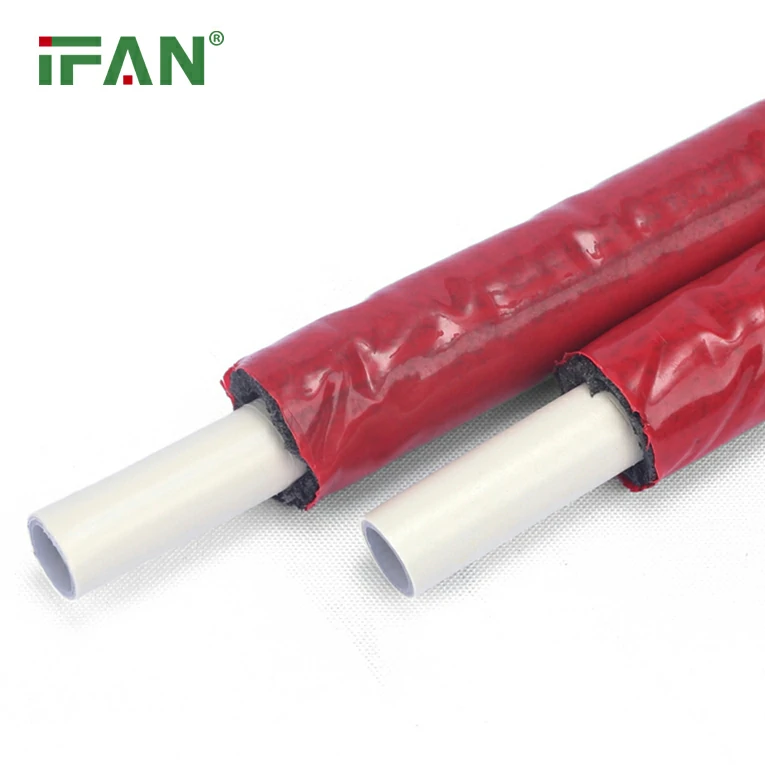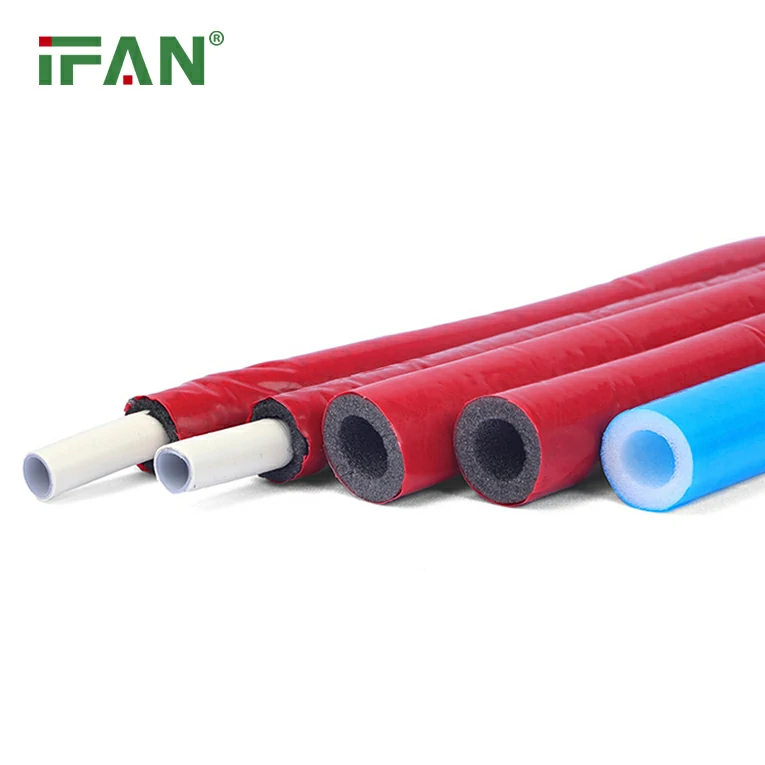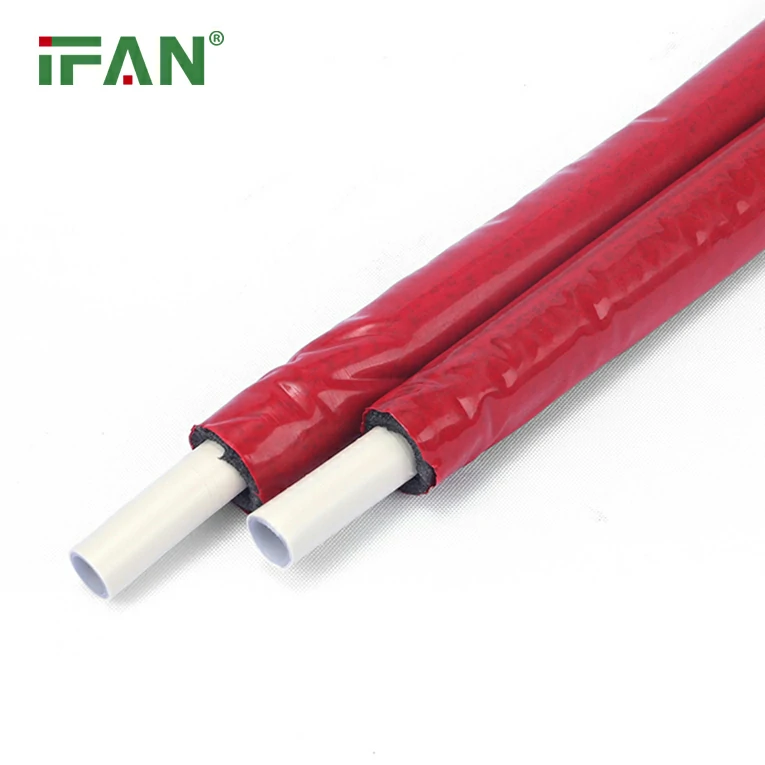PEX (cross-linked polyethylene) pipes have become a go-to solution in residential and commercial plumbing systems due to their flexibility, durability, and ease of installation. However, like all types of plumbing materials, PEX pipes are susceptible to certain environmental conditions that can cause problems. One of the most common issues homeowners face during the colder months is frozen PEX pipes. When temperatures plummet, PEX pipes can freeze, causing significant damage if not properly addressed.
In this article, we’ll discuss everything you need to know about frozen PEX pipes, from the causes and risks to prevention tips and solutions. By the end of this guide, you will be equipped with the knowledge to protect your plumbing system and avoid the expensive repairs that come with frozen pipes.

What Causes PEX Pipes to Freeze?
PEX pipes are more flexible than traditional materials like copper, which is why many homeowners and contractors prefer them. However, like any material, PEX is vulnerable to freezing in extreme cold temperatures, especially if not properly insulated. Here are some factors that can cause PEX pipes to freeze:
1. Exposure to Subfreezing Temperatures
The most obvious cause of frozen PEX pipes is exposure to temperatures below 32°F (0°C). While PEX pipes are more resistant to freezing than metal pipes, they are not immune to the cold. If the temperature drops significantly and remains low for an extended period, the water inside the pipes can freeze, causing the pipes to expand and potentially burst.
2. Lack of Insulation
If PEX pipes are installed in uninsulated spaces, such as attics, basements, or exterior walls, they are more susceptible to freezing. PEX pipes should always be properly insulated, especially in areas prone to cold weather, to help maintain the temperature of the water inside and protect the pipes from freezing.
3. Poorly Heated Areas
Areas of the home that are not adequately heated or insulated—such as garages, crawlspaces, or exterior walls—are more likely to cause PEX pipes to freeze. If the heat does not reach these spaces, the PEX pipes can cool down too quickly, leading to frozen water inside the pipes.
4. Water Flow Restrictions
When there is low water flow or the pipes are not used regularly, the water inside the pipes can sit stagnant and freeze more easily. Pipes that are located far from the main water supply or have been closed off for a period of time are more likely to freeze because there is no constant flow of water to keep the temperature regulated.
The Risks of Frozen PEX Pipes
When PEX pipes freeze, the water inside expands, potentially causing the pipes to burst. This expansion puts tremendous pressure on the pipe, which can lead to a rupture. While PEX pipes are generally more resistant to bursting than rigid pipes, the risk of water damage is still significant. Some of the risks associated with frozen PEX pipes include:
1. Pipe Bursting
Even though PEX pipes are designed to be more flexible than metal or PVC pipes, they can still burst when frozen. The pressure from the ice inside the pipe can exceed the strength of the pipe, causing it to rupture. Once the ice melts, water can leak from the pipe, potentially causing extensive water damage to walls, floors, and personal belongings.
2. Water Damage
One of the most concerning risks of frozen PEX pipes is water damage. Once a pipe bursts or cracks, water can flood the surrounding area, causing damage to the structure of your home. This can result in expensive repairs, especially if the pipe is located in an area that’s difficult to access, like behind walls or under floors.
3. Reduced Water Pressure
Even if PEX pipes don’t burst when frozen, the ice can create a blockage that prevents water from flowing properly. This can result in reduced water pressure or even a complete lack of water in the affected areas.
4. Mold and Mildew Growth
When PEX pipes freeze and then thaw, they may leak water, which can create the perfect environment for mold and mildew growth. If the leak is not discovered and addressed promptly, mold can begin to spread behind walls or under floors, causing both health risks and costly remediation.
How to Prevent Frozen PEX Pipes
Preventing PEX pipes from freezing is essential for avoiding the damage and hassle associated with frozen plumbing. Below are several effective strategies for protecting your PEX pipes during the colder months.
1. Proper Insulation
Properly insulating PEX pipes is one of the most effective ways to protect them from freezing. Pipe insulation can be found at most home improvement stores and is relatively easy to install. Make sure to insulate pipes in areas like attics, basements, garages, and exterior walls, where temperatures tend to drop the most.
2. Seal Drafts and Air Leaks
Ensure that all potential sources of cold air, such as windows, doors, and vents, are sealed properly. Cold air can infiltrate areas where PEX pipes are installed and cause the pipes to freeze. Sealing drafts and air leaks helps to maintain a consistent temperature inside your home and protects your plumbing from freezing.
3. Keep the Heat On
Even if you are going on vacation or won’t be home for a while, it’s important to keep the heat on in your home. The thermostat should be set to at least 55°F (13°C) to prevent the temperature from dropping to levels that could freeze your pipes. If the heat is turned off or too low, you run the risk of PEX pipes freezing.
4. Allow Faucets to Drip
During extremely cold temperatures, allowing a small trickle of water to flow from faucets can help prevent PEX pipes from freezing. The flowing water will help keep the temperature of the water inside the pipes above freezing and reduce the likelihood of a freeze. This is especially important for pipes located in exterior walls or unheated areas.
5. Install Heat Tape or Cables
For areas where PEX pipes are particularly vulnerable to freezing, consider using electric heat tape or cables. These products wrap around the pipe and provide consistent heat to prevent freezing. Heat tape is especially useful for areas like attics, crawlspaces, and outdoor piping.
How to Thaw Frozen PEX Pipes
If your PEX pipes do freeze, it’s important to act quickly to minimize damage. Here are the steps to safely thaw frozen PEX pipes:
1. Turn Off the Water Supply
Before attempting to thaw the pipes, turn off the water supply to the affected area. This prevents water from flowing into the pipes once they thaw, which could cause flooding and further damage.
2. Locate the Frozen Section
Try to identify the section of pipe that is frozen. If the pipe is visible, look for areas that are exposed to cold air, such as outside walls or attics. If you are unable to find the frozen pipe, you may need to check for water leaks in your home, which can indicate where the pipe has burst.
3. Thaw the Pipe Gradually
Once you’ve located the frozen pipe, use a hair dryer, space heater, or heat gun to gradually warm the frozen area. Never use an open flame, as this can cause the PEX pipe to burst. Start from the end closest to the faucet and work your way back toward the frozen section. Apply heat slowly and consistently, allowing the ice to melt naturally.
4. Check for Leaks
Once the pipe has thawed, turn the water supply back on slowly and check for any leaks or cracks in the pipe. If you notice any issues, you’ll need to replace or repair the damaged section of PEX pipe.
Conclusion
Frozen PEX pipes are a common plumbing issue during the winter months, but with the right precautions, they can often be avoided. Proper insulation, sealing air leaks, and maintaining a consistent temperature in your home are the most effective ways to prevent pipes from freezing. If your PEX pipes do freeze, taking quick action to thaw them safely can minimize the risk of damage and costly repairs. By understanding the causes, risks, and prevention methods, you can protect your PEX pipes and ensure that your plumbing system continues to function smoothly throughout the winter.
Frequently Asked Questions (FAQs)
1. Can PEX pipes freeze and burst?
Yes, PEX pipes can freeze and burst under extreme cold conditions. While PEX is more flexible than other materials, the expansion of ice inside the pipes can cause them to rupture if not properly insulated.
2. How can I prevent my PEX pipes from freezing?
Proper insulation, sealing drafts, keeping the heat on in your home, allowing faucets to drip, and using heat tape can all help prevent PEX pipes from freezing during cold weather.
3. What should I do if my PEX pipes freeze?
Turn off the water supply, locate the frozen section of pipe, and use a hair dryer, heat gun, or space heater to thaw the pipe gradually. Never use an open flame. Once thawed, check for leaks and repair any damage.
4. Are PEX pipes more prone to freezing than other types of pipes?
PEX pipes are more flexible than metal pipes, which can make them more resistant to freezing. However, they can still freeze under certain conditions if not properly insulated or exposed to extreme cold.
5. Can I fix frozen PEX pipes myself?
Yes, you can thaw frozen PEX pipes yourself if you have access to the affected area and the proper tools. If
the pipe has burst or is severely damaged, it’s best to call a plumber for repairs.






